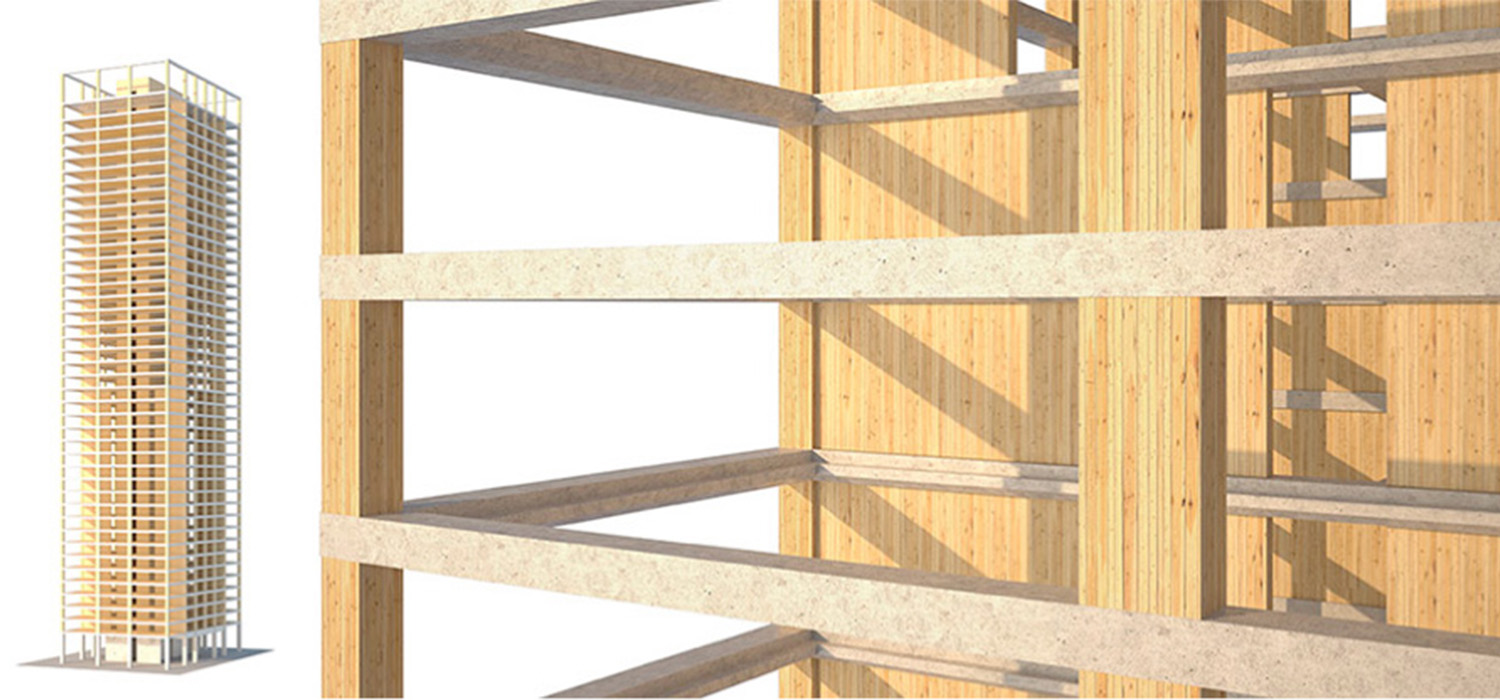Secret Ingredient to Sustainable High-Rises?
Share

What’s the secret ingredient to developing a sustainable high-rise?
You may be surprised to find out that it’s wood; particularly cross-laminated timber. Several recent publications have highlighted this type of construction. CLT is an engineered wood that is created by cross-layering, gluing, and pressing beams of wood together up to a foot thick. The result is “plywood on steroids” as referred to in a March Popular Science Article. The competition among architects for the next tallest wood high-rise has started and the race is heating up.

Why the sudden interest in wood? The main speculations that come along with wood are fire, emissions, and deforestation. Well, mass timber is cheaper, easier to assemble, and more fire resistant. Yes, more fire-resistant than steel! A thick plank of wood will char on the outside, sealing the wood inside from damage; whereas metal will start to melt like spaghetti. Wood also holds no carbon guilt because it’s carbon sink by sequestering CO2 even after it’s been turned into lumber. Yet, deforestation is also an issue that contributes 18% to CO2 emissions. According to Michael Green, North American forests will grow enough wood for a 20-story building every 13 minutes. There are models for sustainable forests that will allow the right trees to be properly cut, creating fast-growing cycles.
Four-story and five-story balloon frames have been the standard for low-rise wood construction in the US. At the same time, steel and concrete are the traditional materials of the modern metropolis. But unfortunately, these two materials alone contribute to 8% of man-made greenhouse emissions resulting in buildings contributing 47% of the total CO2 emissions. Meanwhile, the world population will double in 36 years with the requirement for a lot of new housing.
There’s a lot of hesitancy to use timber as a main source of construction material. It just happens to be that Mother Nature holds the patent and we don’t feel comfortable using it as Green has stated, but there are solutions and rewards that come with this material that hopefully will be recognized in the near future.
Modularity is a compelling aspect of CLT construction. As we have seen from experience, prefab methods can greatly increase quality, reduce rework, and reduce material waste. Comparatively, CLT and BIM seem to make a good deal of sense together. Think of a library of modeled CLT objects that can be applied to buildings. Cool Right?